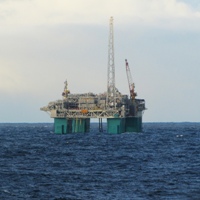Gjøa On Stream
 The Gjøa oil & gas field developed by Statoil began production at 15.24 on Sunday 7 November, opening the way for more activity in the northernmost part of the Norwegian North Sea. “We envisage that its facilities can make this field a hub for developments in this area”, says Øystein Michelsen, executive vice president for exploration and production Norway. The Vega gas satellite is also due to come on stream in the near future.
The Gjøa oil & gas field developed by Statoil began production at 15.24 on Sunday 7 November, opening the way for more activity in the northernmost part of the Norwegian North Sea. “We envisage that its facilities can make this field a hub for developments in this area”, says Øystein Michelsen, executive vice president for exploration and production Norway. The Vega gas satellite is also due to come on stream in the near future.
Image courtesy of Statoil/Martin Lindland
Operated by Statoil, it has been developed with subsea installations tied back to Gjøa. “Oil & gas are set to flow from Gjøa for at least 15 years to come”, says Michelsen. “However, we have seen that technology advances and the recovery factor constantly improves. “There are also openings for further development in the area, so the field’s platform and infrastructure has been designed for a producing life of at least 30 years.
Bringing Gjøa on stream marks the completion of an extensive development job for Statoil, notes project director Kjetil Digre. “Almost twenty million work-hours have been performed. I am now very pleased that production is under way.” Gjøa is named after the ship used by Norwegian Polar explorer Roald Amundsen, and the vision for the development has been “based on history, built for the future”. The project has been implemented in line with that slogan, says Digre: “We have taken good care of our historical experience from earlier developments. At the same time, creativity and foresight have been important for the many complex decisions we’ve had to take along the way. That’s taught us new lessons.”
The Gjøa platform is the world’s first production floater to receive its power from land. Electricity is transmitted through a 100 km cable from Mongstad north of Bergen. This reduces carbon emissions on the field by about 210,000 t per year. It is only the second Norwegian offshore installation to be powered in this way, after Troll A.






